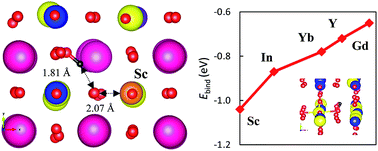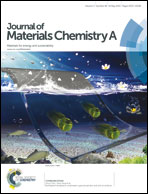Proton trapping in Y and Sn Co-doped BaZrO3
Abstract
Recent experimental and computational works have shown that Y and Sn co-doped BaZrO3 (BZSY) exhibits superior hydration ability and improved power output performance to that of the traditional solid oxide fuel cell (SOFC) electrolyte, Y-doped BaZrO3 (BZY). BZSY is also chemically stable in both H2O and CO2 atmospheres and is thought to have great potential as a future electrolyte material in proton-conducting SOFCs. Herein, we report the use of potential-based calculations in the assessment of dopant–proton trapping in this exciting new material. We use a genetic algorithm to find the lowest energy BZSY configuration and then proceed to locate the lowest energy proton doping sites. Calculations of the binding energies between the proton and a range of trivalent dopants, commonly used for these kinds of electrolyte, reveal its dependence on local chemical structure and can range from weak values to values far in excess of previous computational and experimental results for BZY. Our results strongly indicate that excessive doping of BZSY, either with Y or other aliovalent dopants, maybe detrimental to performance as the concentration of potentially trapped proton sites increases.


 Please wait while we load your content...
Please wait while we load your content...